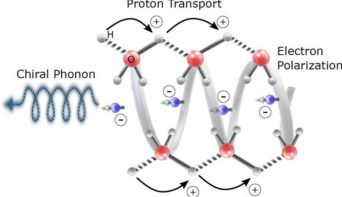
Physicists in the US have developed a new method to cool tiny quantum drum, putting it into a long-lived quantum ground state. The tiny device could be used as a new method of storing quantum information or as a motion sensor. It could also help advance the field of quantum acoustics which explores the quantum nature of mechanical vibrations.
“We are currently just at the cusp of making engineered massive objects that obey the rules of quantum mechanics, which are normally observed only at the atomic scale,” explains John Teufel, a research affiliate who designed the drum and carried out the experiment with his team at the National Institute of Standards and Technology (NIST) in Colarado, US.
Quantum percussions
The micro-drum is a quantum-mechanical resonator made from aluminium. It is 100 nm thick and 15 µm wide and is incorporated into a superconducting cavity in the set-up. The team cools the drum to microkelvin temperatures, bringing it to its quantum ground state with its range of motion approaching zero. In other words, the amplitude of its “beats” approaches zero. The circuit is designed so that the drum motion can influence the microwaves inside an electromagnetic cavity. The researchers created strong interactions between microwave light oscillating at 7.5 GHz and the drum vibrating at radio frequencies of 11 MHz.
Cool tool
The researchers use a technique similar to laser cooling of atoms – sideband cooling – only they use microwaves instead of laser light. The microwaves can be used to measure and control the drum vibrations, and vice versa. What is different about the Teufel team’s cooling technique is that the entire apparatus is mounted in a traditional cryostat before the sideband cooling is started. “This gives us a big head-start because most laser cooling experiments begin at room temperature. Here the combination of low temperature pre-cooling and microwave sideband cooling is the niche that gives us our advantage,” explains Teufel. The cryogenic cooling reduces the drum energy to about 30 quanta. Sideband cooling then reduces the drum temperature from 20 mK to below 400 µK, steadily lowering the drum energy to just one-third of one quantum. This means that for two-thirds of the time the drum is in its ground state (with no quanta) and for about one-third of the time there is some energy.
Information and sensors
The drum motion will persist for hundreds of microseconds, much longer than recorded before. “Because of these long time scales we could potentially encode quantum information into the motion of the drum where it can be temporarily stored before using microwave light to retrieve it” explains Teufel. This would be very useful in quantum computing. He also wants to combine the new circuit with superconducting quantum bits to create and manipulate the motion of relatively large objects at quantum scales. “For me it is the fundamental level of this research that is most exciting,” he claims.
For me it is the fundamental level of this research that is most exciting John Teufel, NIST
But on a more practical level, Teufel says that because the system measures the minute drum beats, it could also serve as a motion sensor – sensing minuscule position changes in quantum systems. He also points out that drum movements are universal and could easily be integrated into quantum circuits. “I would really like to exploit the ‘quantumness’ of this circuit,” says Teufel.
The first engineered object to be coaxed into the quantum ground state was developed by researchers last year and won third place in the Physics World 2010 Breakthrough of the Year award. Compared to that first drum, the NIST drum has a higher quality factor, so it can hold a beat longer, and it beats at a much lower frequency.
The research has been published in a paper in Nature.




